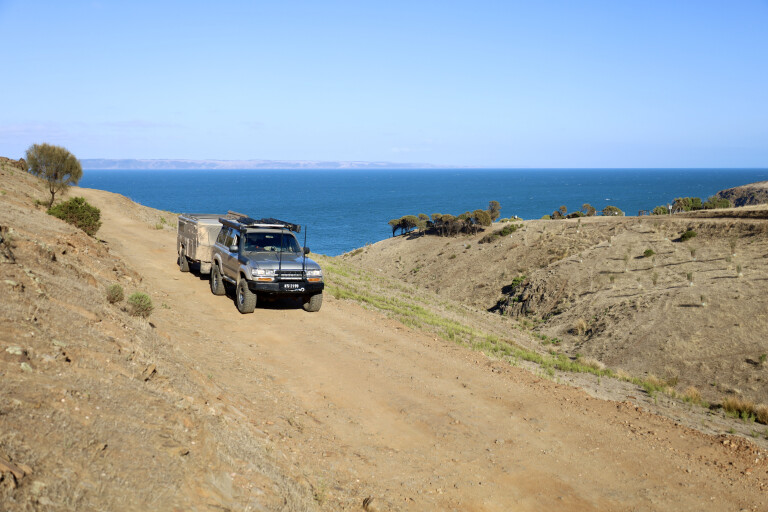
Generally while touring I have a place in mind I want to explore, or I just need somewhere to camp. However, while heading south from Adelaide I was drawn to the bottom of the Fleurieu Peninsula, not for the wineries (although they looked pretty inviting) but for the fact I may see Kangaroo Island.
Little did I know at the time, the Fleurieu Peninsula is known for its stunning rugged coastline, white sandy beaches, oodles of wildlife, and a few spectacular campsites.
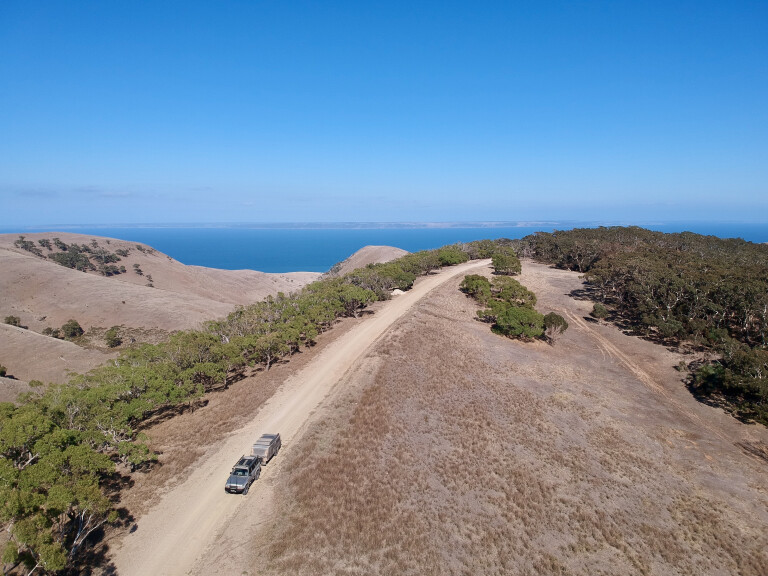
According to the map, the obvious place to head to was Deep Creek National Park for a few days to explore and see what this area has to offer.
Being only 100km south of Adelaide, it seemed the perfect option. Online bookings are essential, but, of course, the usual problem of a very poor network signal at the bottom of the Peninsula made booking quite difficult.
Camping
There are five campgrounds within Deep Creek, so unless you’ve been here before it’s a bit hard to work out which is the one for you, and because you need to book online it’s also a bit of a gamble. My option was limited to the Trig campground, and boy I wasn’t disappointed.
Trig caters for all styles of camping right through to off-road ’vans, where most sites are private with huge grass trees or gums screening the other sites. There are firepits at nearly all campsites and several toilets around the campground; and if you’re lucky enough to snag a site at the popular Stringybark campground, you get hot showers too.
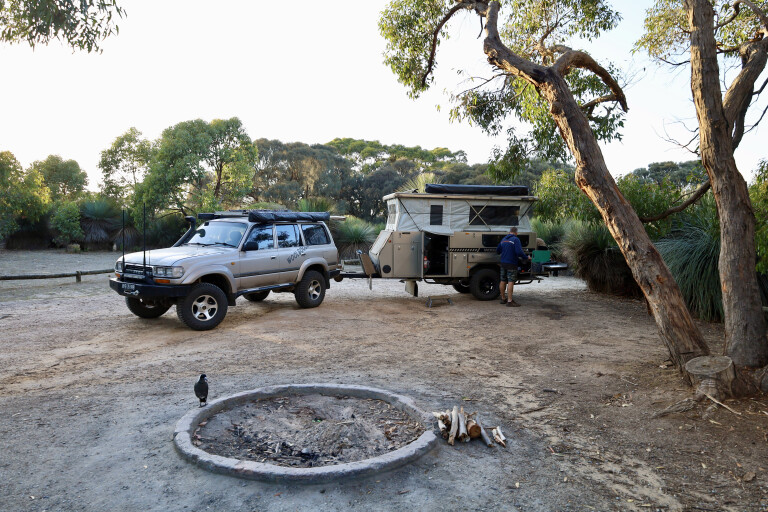
If you’re after a bit more comfort, Goondooloo Cottage near Goondooloo Ridge picnic area was built with ironstone walls, slate floors and tree-trunk posts to portray an early settler’s cottage, and it’s filled with modern-day comforts. It has large panoramic windows overlooking the windswept paddocks towards Pages Island and across the southern ocean.
From Trig campground there are several hikes through to local landmarks including Deep Creek waterfall. You can also cut across to Cape Jervis to the famous Heysen Trail, which heads all the way north to the Flinders Ranges. In fact, there are 15 walking trails in Deep Creek, ranging from easy to difficult, with some providing spectacular views across to Kangaroo Island, Back Passage and the rugged Creek Valley.
Two local Aboriginal language groups have a deep spiritual connection to the Fleurieu area, and the Kaurna and the Ngarrindjeri both illustrate through their dreamtime stories on how the landforms were created. The two groups have lived here for thousands of years and there are restricted areas of significant importance to the groups, with protocols in place to protect their heritage.
Off-roading
Nearly all of the roads in to and around Deep Creek are 2WD accessible, which does explain why the campsites are always busy, but there’s one track on the western side of the park down to Blowhole Beach that’s 4WD only. Rated as a medium track for the sheer steepness and the rough rocky sections, it’s high-range 4x4 down and low-range 4WD back up.
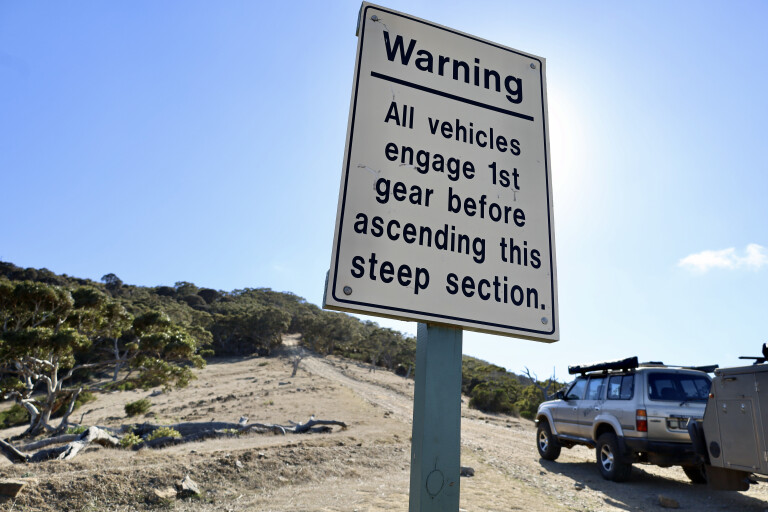
It’s a relatively short 5km drive down to the carpark, with superb views across the strait to Kangaroo Island, making it a magic trip to the bottom. They call this stretch of water Backstairs Passage, a 14km straight of treacherous water between the Fleurieu Peninsula and Dudley Peninsula on KI. Very strong and dangerous currents flow through here, connecting Gulf St Vincent to the open Southern Ocean.
Encounter Marine Park
Surrounding the Fleurieu Peninsula and across to the eastern shores of KI, is the Encounter Marine Park. This marine sanctuary, KI and the mainland are close to the southern edge of the Continental Shelf. Known as Murray Canyon, it’s one of two known deep-water submarine trenches in SA, with depths plunging dramatically to some 5000m and supporting a rich and varied mix of sea life.
The marine park protects giant sponge gardens in a huge habitat containing an array of sea life that make this sanctuary zone extraordinary as a refuge. Chatting to a local ranger at the car park who was passionate about the area, they said they often spot seals, southern right whales and white pointer sharks in the bay below, but it’s all a matter of being there on the right day.

Also on the western side of the Deep Creek NP is Talisker Conservation Park, where you’ll be blown away by some rich mining history. Silver was discovered here in 1862 by a couple of Scottish brothers looking for gold, and it was named the ‘Talisker of Scotland’ after a place near their home. Up until 1872, these mines were the largest-producing silver and lead mines in SA, with some even quoted as the biggest in the Southern Hemisphere at the time.
After the minerals dwindled, arsenic was discovered and was mined until the mines finally closed in 1925. Walking around the old stone miner’s huts, manager’s office, the old whim foundations and indeed the fenced-off mines, the Talisker mines must have been a huge operation. Cornish miners worked hard across the years, transporting more than 36,000 bags of ore to the waiting barges in Fishery Bay. The workers carried the bags of ore through chest-deep water on to the barges, then transferred to ships in deeper water for transportation.
The mine site is truly amazing, with the main shaft more than 130m deep, with eight levels connecting to the other mines. The miners hit water at 132m deep and the pump struggled to keep the water at bay, so a connecting shaft was dug to act as a drain to let the water out; this can be found on the steep creek walk below the tailing mounds. Along the trail, look for the round kiln built in 1869 that supplied bricks for other structures.
Cape Jervis
The next stop was the settlement of Cape Jervis, which is the port for the ferries heading across to Kangaroo Island. Just before 1834, John Haynes established a whaling station at the cape employing 24 men where, for a few years, they were successful; but when Haynes died, his operation was sold off. In 1850, only one whale was caught by another operator and the station was subsequently abandoned.
It was in the mid-2000s when evidence of old stone cottages and the former whaling station were uncovered at Fishery Beach. Fragments of whale bone, chimney and flue remnants were enough evidence to recognise this as the old headman’s hut from the whaling days, which according to archaeologists is the only hut of its type identified in Australia to date. There’s only a few stone walls left to find, but projects are underway to preserve the area.
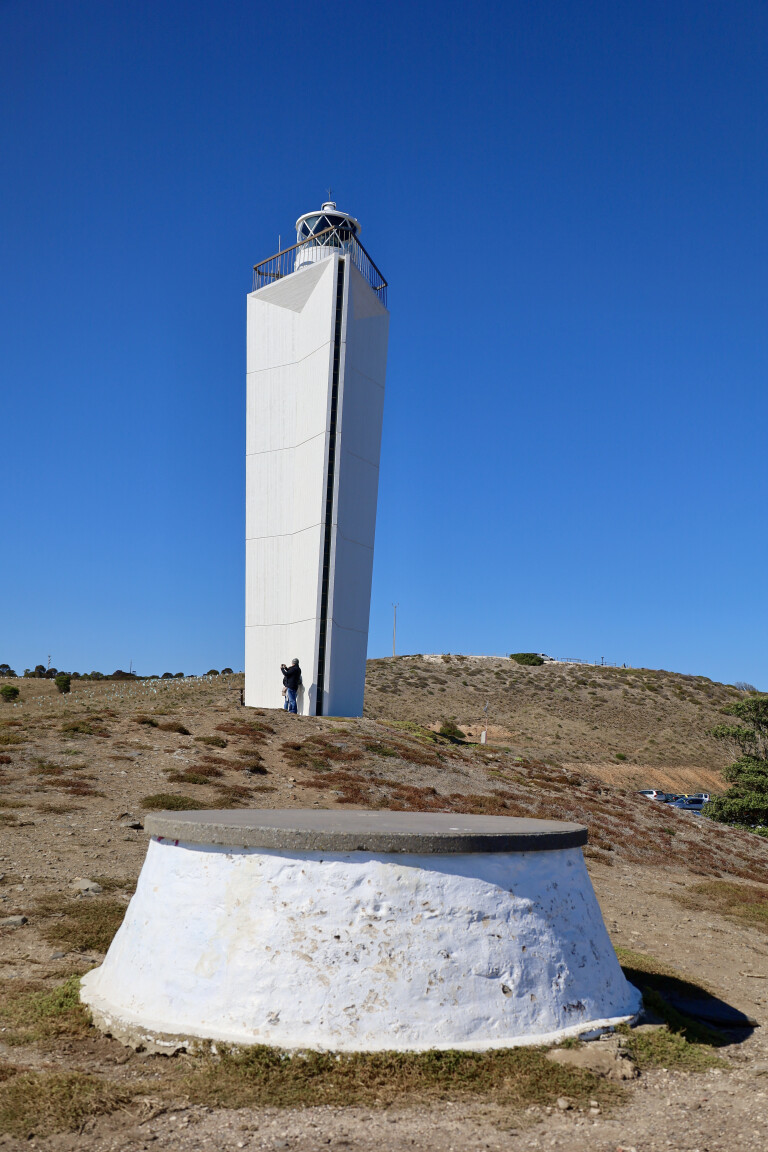
Across at the marina at Cape Jervis, the new unusual lighthouse was built in 1972 to replace the original, much shorter round one erected in 1871. The original light stood only seven metres high and was fitted with a kerosene wick-burner lamp, manned by two lighthouse keepers 24 hours a day.
Over the next 100 years, kerosene lamps were changed to incandescent kero-vapour lamps, then to a gas flashing light in 1927 when the two keepers were withdrawn from service, before the current 18m fully automatic lighthouse was constructed. The original base of the 1871 lighthouse has been kept as a memorial to where it originally stood.
It’s easy to work out that Deep Creek NP is all about nature and, along with the scenery, the native wildlife is in abundance with western grey kangaroos, short-beaked echidnas, more than 100 different bird species, and whales which pass by between June and October on their annual migration. Put this park on your to-do list when in the area – it has to be seen to be believed.
5 things to see and do
TALISKER SILVER LEAD MINE HIKE
There are three hiking options to explore the 19th century silver-lead mining and ore-processing operation. Learn about the ingenuity of the Cornish miners and their families as you walk through this revegetated area of the Talisker Conservation Park. Other buildings such as a miner’s cottage, the manager’s office, the stone flue and the round Cornish boiler next to the engineering shed can all be viewed on the interpretive walk around the hill. Allow a good two hours to wander around the 1.5km loop
WHALE WATCHING
During winter and spring, whales pass by Deep Creek NP on their migration north from the cool Antarctic waters to the warmer East Coast waters to give birth. There are plenty of vantage points throughout the park to view this spectacle, as well as other marine life.
FOUR-WHEELING
On a calm day, head to stunning Blowhole Beach via the 2km hiking track from the Cobbler Hill car park or get there by 4WD on the steep drive down to the eponymous car park. The beach itself is only some 200m in length, but rests between two rugged headlands and is a great place to spot dolphins and other marine life, plus kangaroos and other nearby terrestrial wildlife.
CAPE JERVIS
West of Deep Creek NP is the small town of Cape Jervis on the headland of the Fleurieu Peninsula. Standing sentinel here is the uniquely shaped Cape Jervis Lighthouse that was built in 1972, replacing the original and much shorter light built in 1871. Cape Jervis is the jump-off point to Kangaroo Island, with a regular daily passenger and vehicle ferry service that operates on the hour during summer, but extends to three hours in winter.
WHEN TO VISIT
Early spring or late Autumn would be ideal the time to explore Deep Creek NP’s 15 walking trails when the nights are cool and the days are warm. During summer the temperatures can hit anywhere up to 35C, making the area and the hiking trails very uncomfortable.

COMMENTS